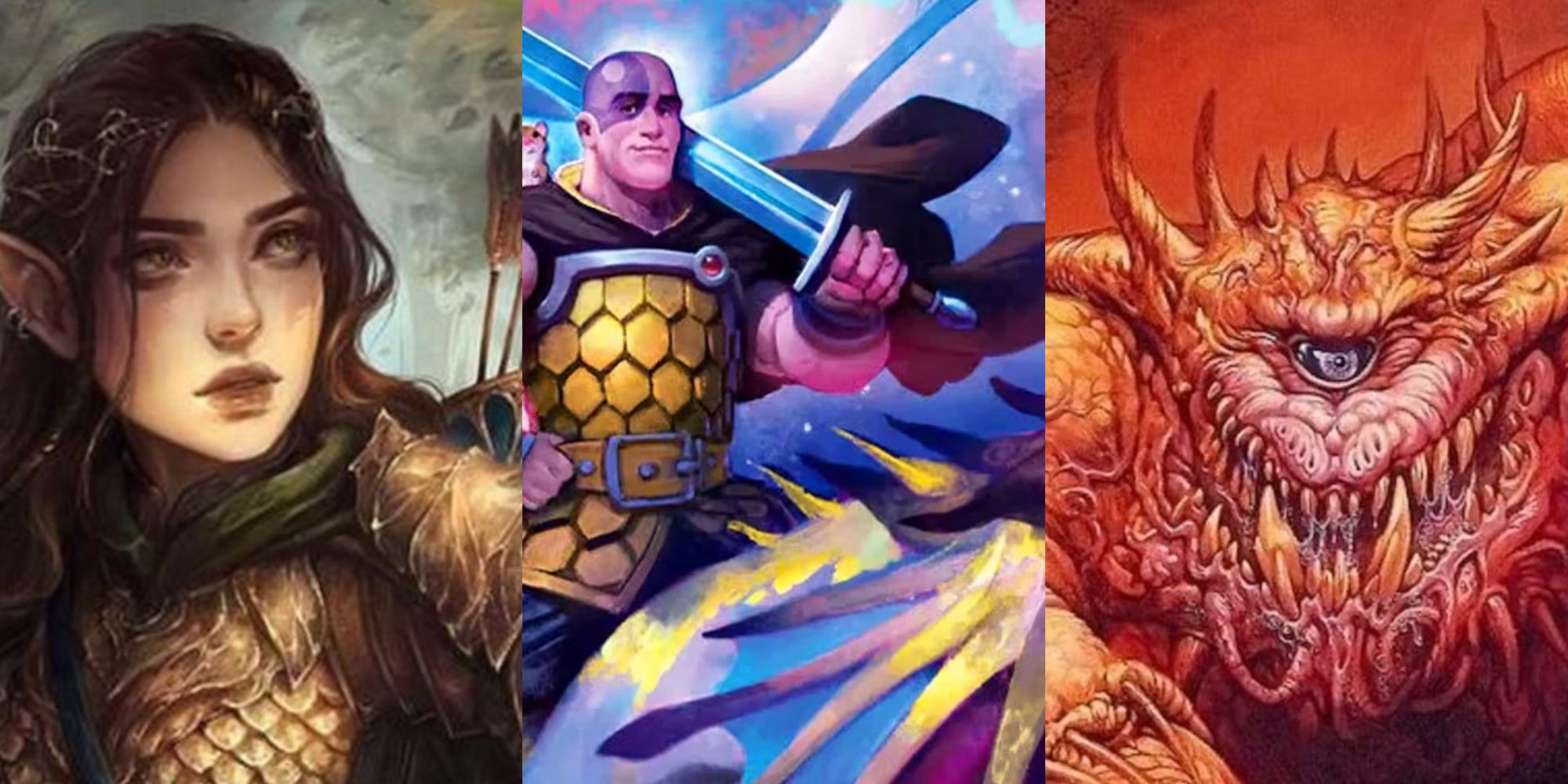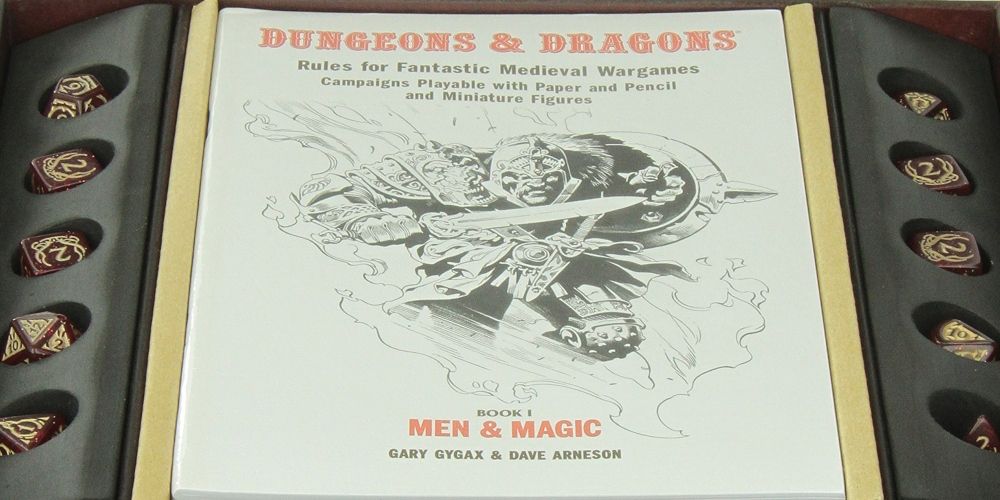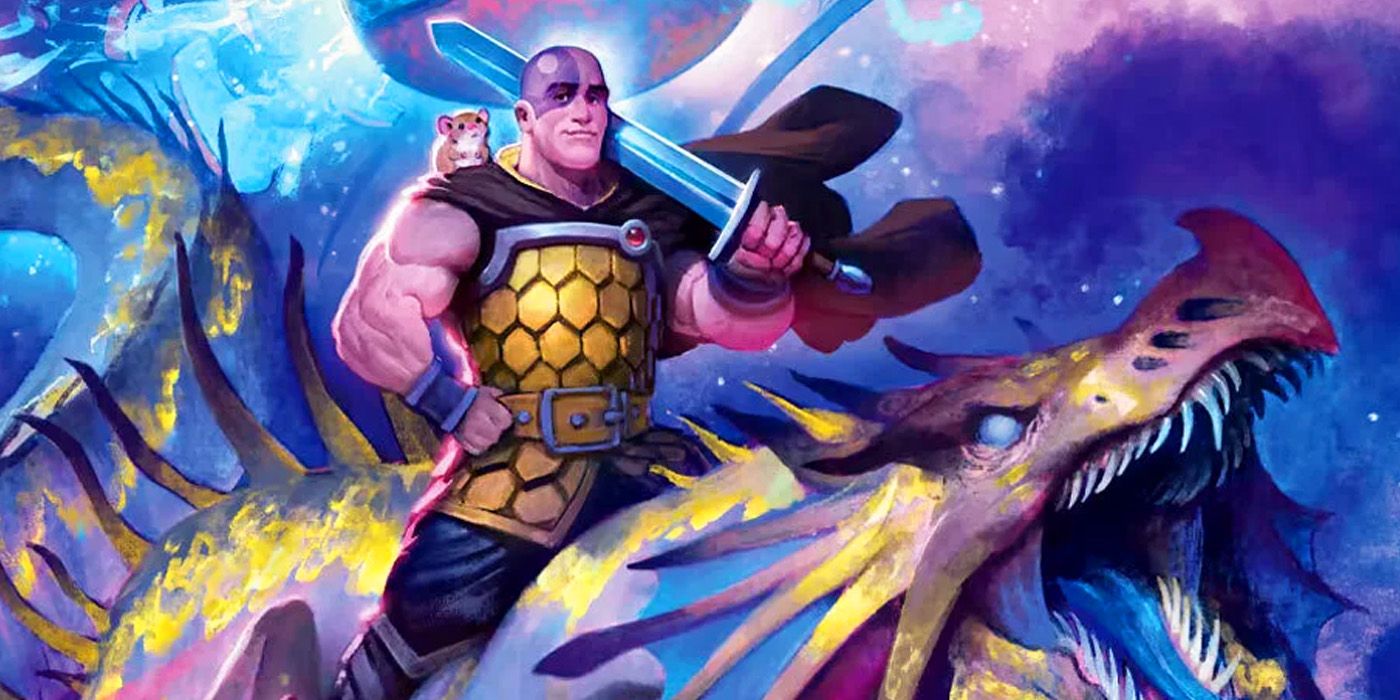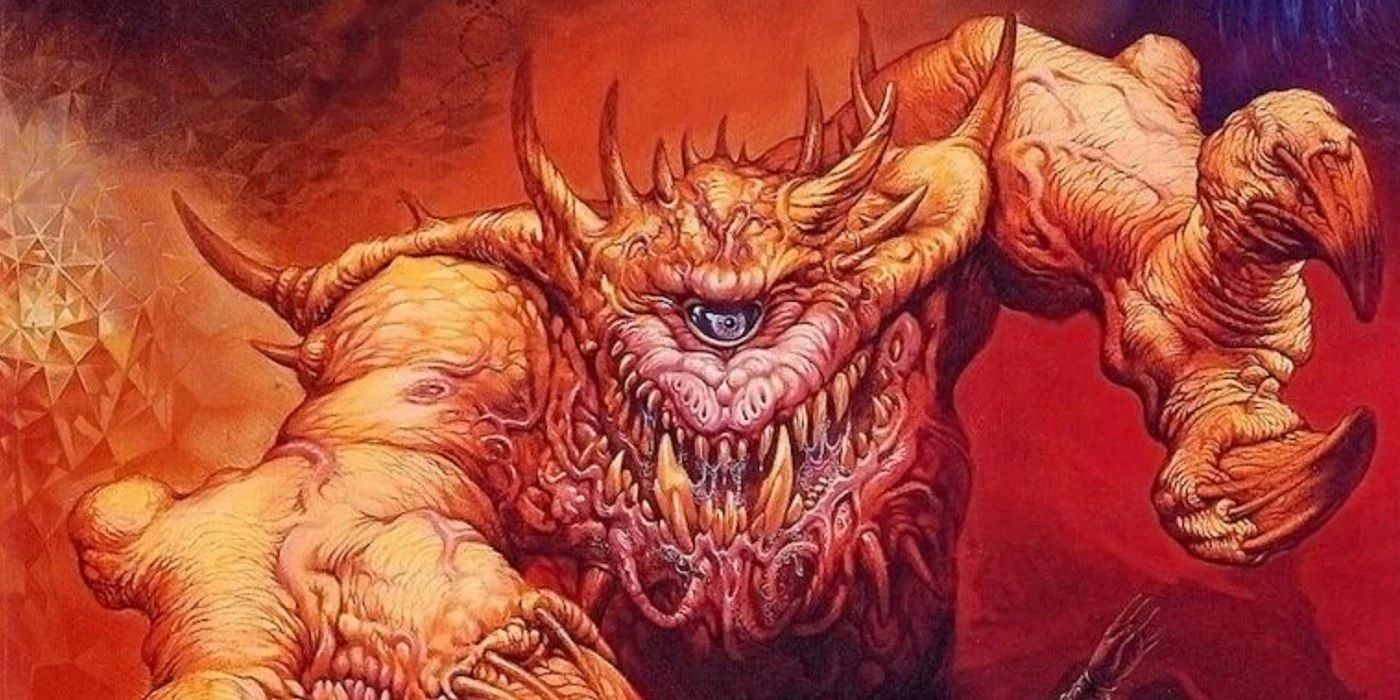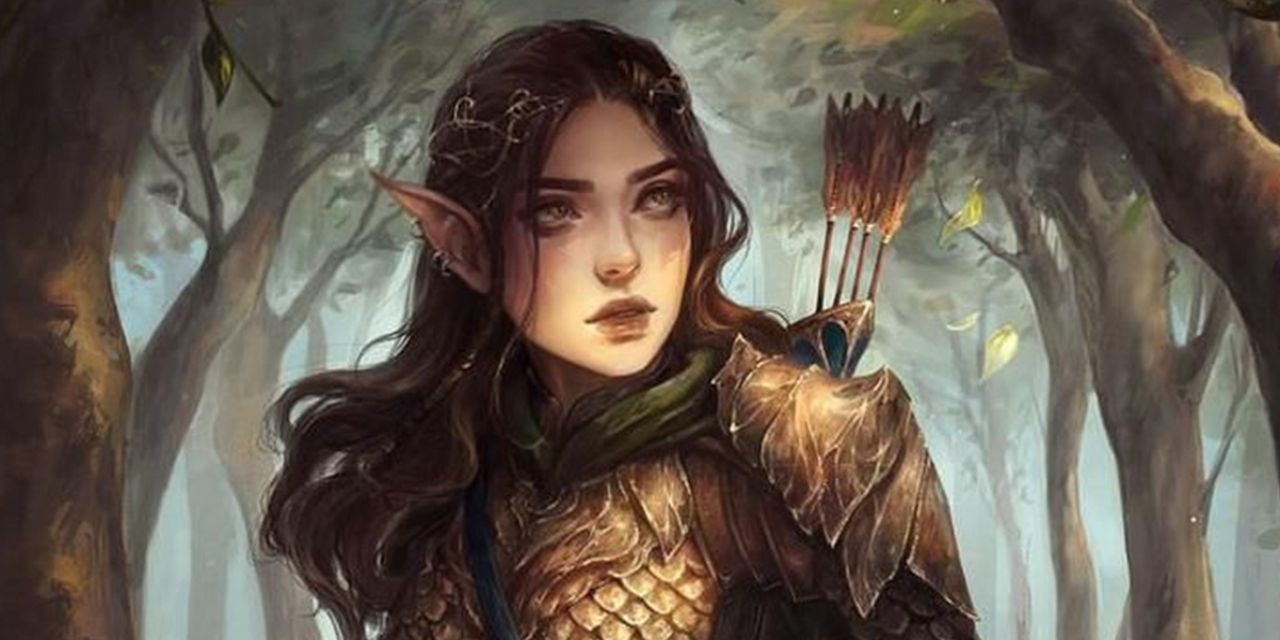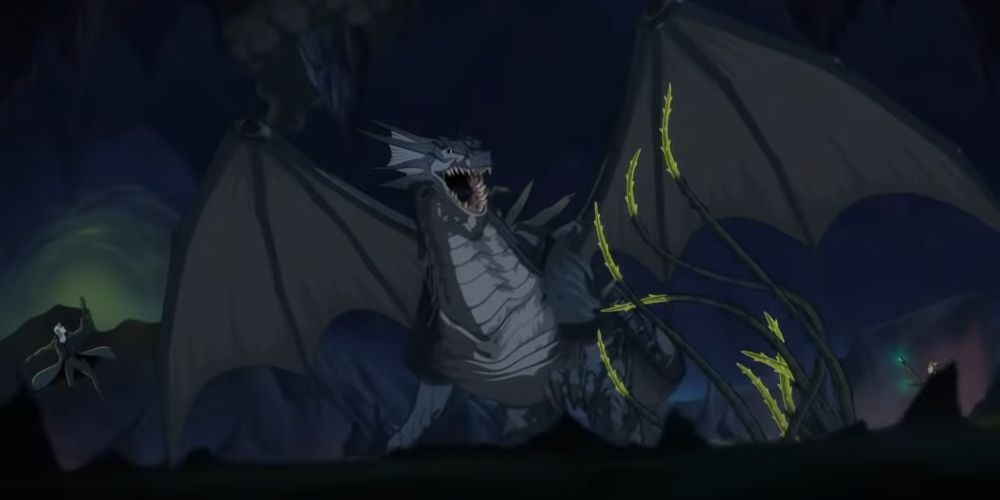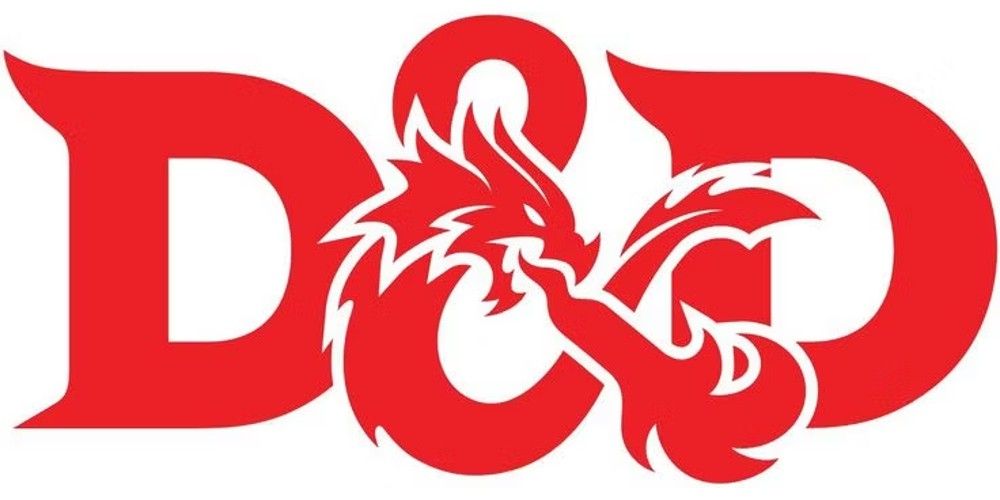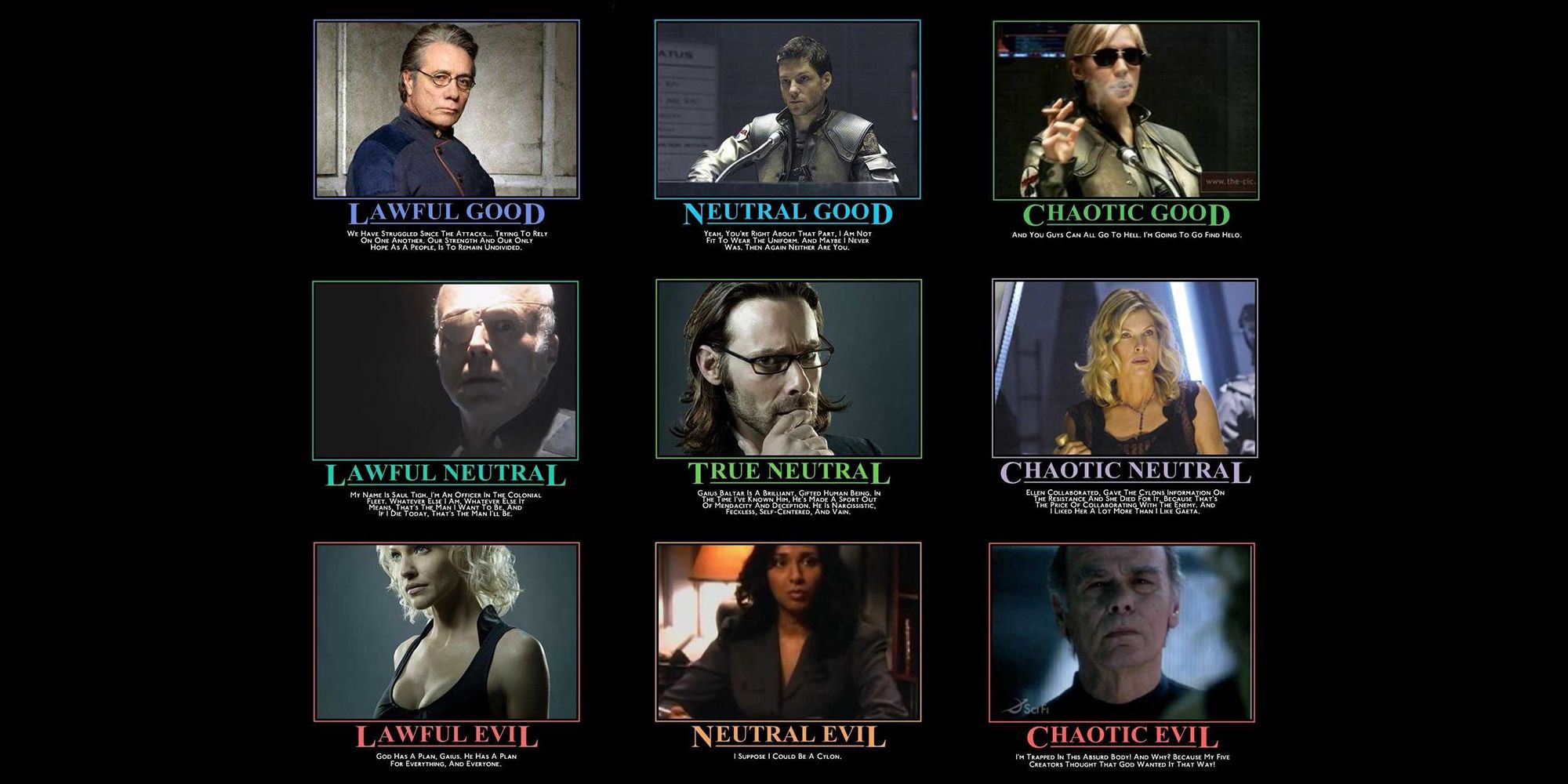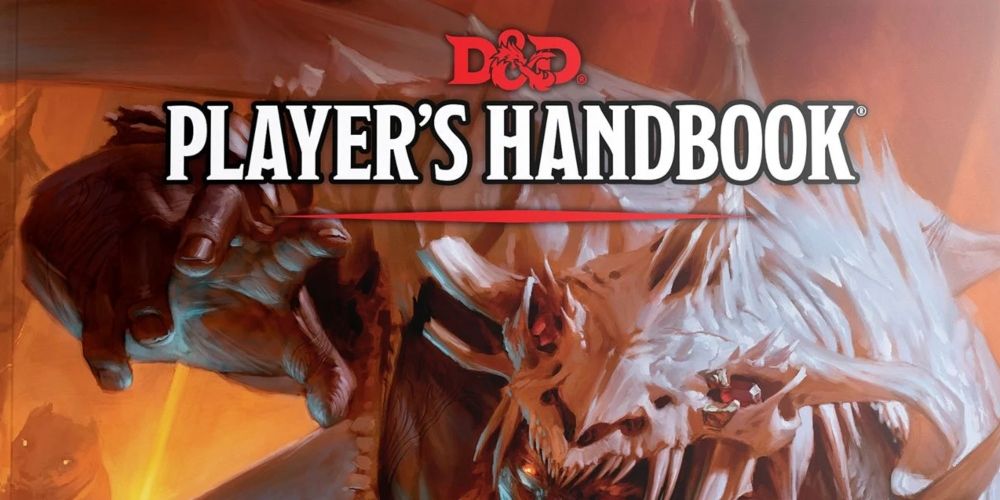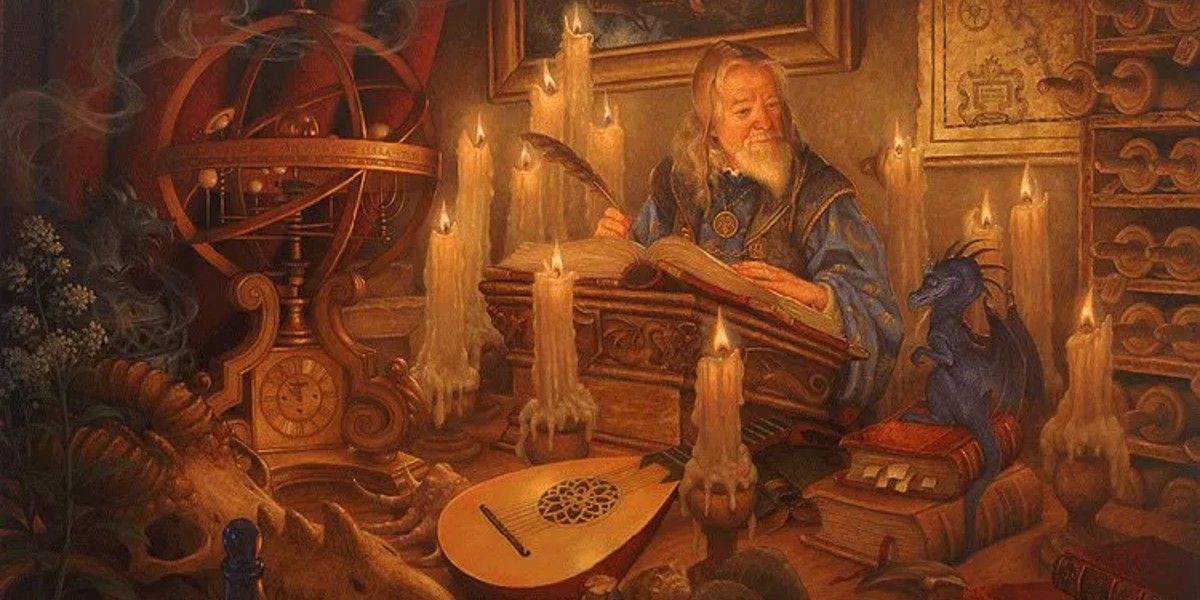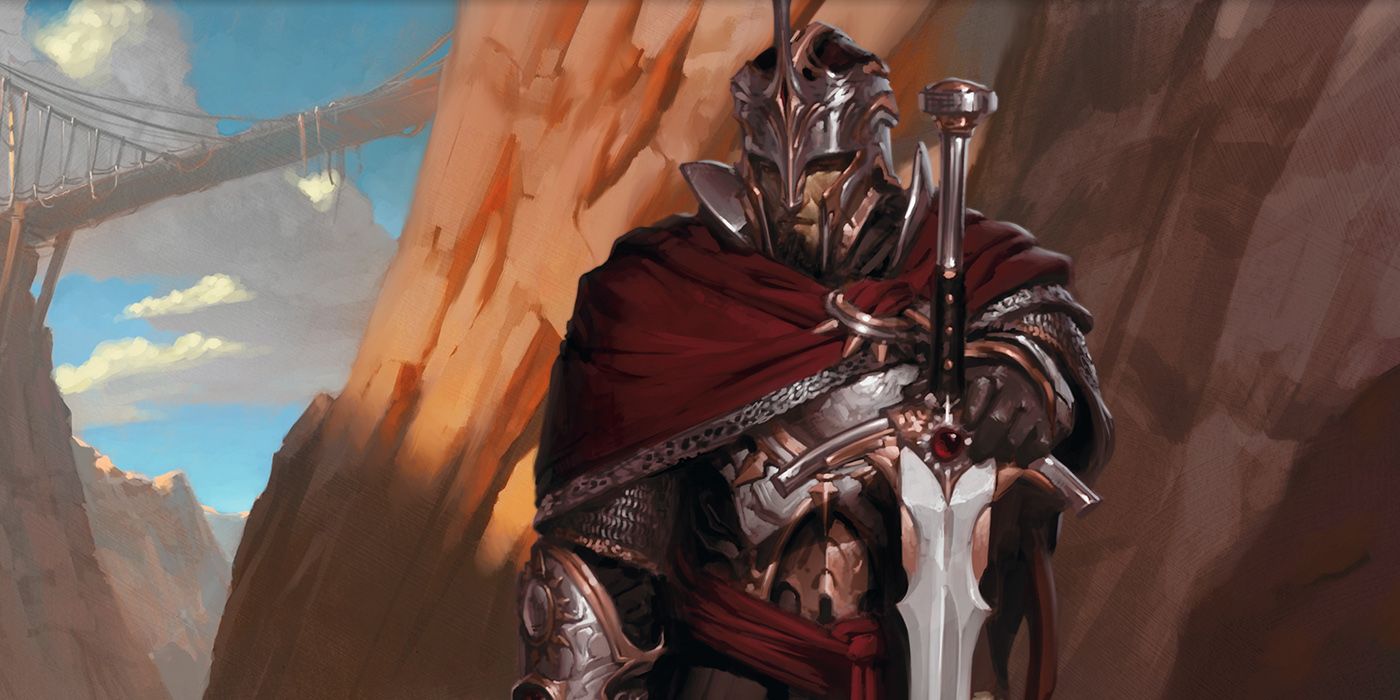A game that has been around for almost five decades, like Dungeons & Dragons, changes to keep up with the times. This is true regardless of genre. Even Monopoly has changed, if only in canonizing some of the most popular house rules. Dungeons & Dragons has changed in many ways over five decades, from the simple to the extravagant.
The 5th Edition of Dungeons & Dragons has been out for eight years. With the next edition under development, currently known as One D&D, the time is right to look back at the game’s history and show just a few ways that Dungeons & Dragons have changed over the years.
10 Art Was Sparse
The modern Dungeons & Dragons game, as befits a game published by a company that rode an art-focused collectible game to prominence in the 1990s, is well-illustrated. With artwork on every page ranging from elaborate borders to bright oil and watercolor paintings, every edition of D&D since 2000 has been a delight to behold.
Published by a small group of Midwestern gamers, the original books’ art was mostly composed of small drawings in the margins. With little space for artwork, what was there was important but strictly secondary to the text.
9 Armor Class Went From Counting Down To Counting Up
One of the odder design choices of the original Dungeons & Dragons was to make smaller numbers better in terms of armor. The origin of this system was obscure; some sources claim that co-creator Dave Arneson imported it from a Napoleonic naval wargame he was fond of, while others claim that it was inverted from Gygax’s previous game, Chainmail.
Regardless, armor class became a positive target number in D&D 3E, and has been consistent since then. Players liked the consistent rules about target numbers, despite some players feeling that the game lost a bit of flavor.
8 Monsters Weren’t Playable Characters Yet
The modern Dungeons & Dragons game supports a wide array of playable races. From the most recent addition of races like the Thri-Kreen, Hadozee, Plasmids, and Giff in Spelljammer, to classics like the half-orc and tiefling, there has long been a substantial crossover between D&D’s Monster Manual and Player’s Handbook.
In Original D&D, with so much of the game undefined, or based on rules taken wholesale from other games, the monsters were simple opponents. They had none of the extensive rules related to player characters.
7 Races Are No Longer Level Restricted
In the oldest editions of D&D, and in fact, up until Advanced Dungeons & Dragons 2nd Edition, non-human characters were always more limited than their human counterparts. This felt especially unrealistic with very long-lived races like elves and dwarves.
With the change to Dungeons & Dragons 3rd Edition in 2000, levels were no longer restricted by race. In the present version of the game, every player character can reach the top-level in the game. Level 20 in 3rd and 5th Editions, Level 30 in 4th Edition.
6 Dragons Now Come In Many Colors And Are Always Intelligent
In the original edition of Dungeons & Dragons, the chromatic dragons were already present, but they were far different from their modern counterparts. The intelligence of dragons was highly variable early, with a chance that any given dragon, even a mighty Red Dragon, might be a mindless beast.
In subsequent editions, the intelligence of dragons increased until Chromatic Dragons became crafty villains. The most powerful dragons have become foes that a party can build themselves up for an entire campaign to defeat. And with Metallic Dragons joining their Chromatic counterparts starting in Advanced D&D, Good can get in on the reptilian fun.
5 There Were Three Core Books, But Different Books
The three core books of the Dungeons & Dragons game, since 1974, have been the familiar Player’s Handbook, Dungeon Master’s Guide, and Monster Manual. These three have introduced generations of gamers to the magic of tabletop roleplaying, and are an indispensable gateway to the hobby.
In the original D&D boxed set, there were three books. Men and Magic, the thinnest of the three volumes, was the original Player’s Handbook. Monsters and Treasure set the table for creatures and rewards, while The Underworld & Wilderness Adventures capped the trio with rules for adventuring in the dungeons and out in the world.
4 Alignments Have Changed Multiple Times
Alignment is an iconic part of Dungeons & Dragons. In the 1974 edition of Dungeons & Dragons, and every edition of the original game up to the unification of the brand in 2000, there were three alignments: Lawful, Neutral, and Chaotic. The alignments of D&D have changed how people see fictional characters.
Ever since the Player’s Handbook came out in 1977, alignments became instantly recognizable, filling a much-needed niche in how to describe a player character. In 2008’s Fourth Edition, alignments were changed to a line from lawful good to chaotic evil, only to be changed back to the familiar matrix in 2014 with Fifth Edition.
3 Hardcover Books Last A Lot Longer
Hardcover books are nothing new to Dungeons & Dragons. The earliest hardcover of the game was the Player’s Handbook, released in 1977, the first book of Advanced Dungeons & Dragons.
However, the original game consisted of three spine-stapled books distributed in a hard box. Players of Original Dungeons & Dragons had a box to hold their dice, pencils, and character sheets, but in exchange, their books were far more flimsy, and many copies of the original game were lost to simple damage that later books would have shrugged off.
2 There Were Four Classes, Representing Familiar Niches
The original edition of Dungeons & Dragons had four classes. It also had three nonhuman player character races which acted like classes. The four classes open to human player characters were Fighting Man, Cleric, Magic User, and Thief. With name changes, these classes remain in the current game as Fighter, Cleric, Wizard, and Rogue.
The four classes formed distinct tiers of expertise: war, divinity, arcane magic, and skill, which have lasted to this day. All of the modern classes in Dungeons & Dragons owe something of their formation to those original four classes.
1 Class Levels Had Titles In 1974
In both the 1974 original edition of Dungeons & Dragons and the 1977 first edition of Advanced Dungeons & Dragons, there were unique titles for every class level in D&D. Whether a character was a first-level fighting man or an 11th-level magic user, a title described who they were.
This chart of titles went out of use with 1989’s Advanced Dungeons & Dragons 2nd Edition and has never returned. Class advancement has happened since 2000 in different ways, with prestige classes in Third Edition, paths in Fourth Edition and Archetypes in Fifth Edition.

